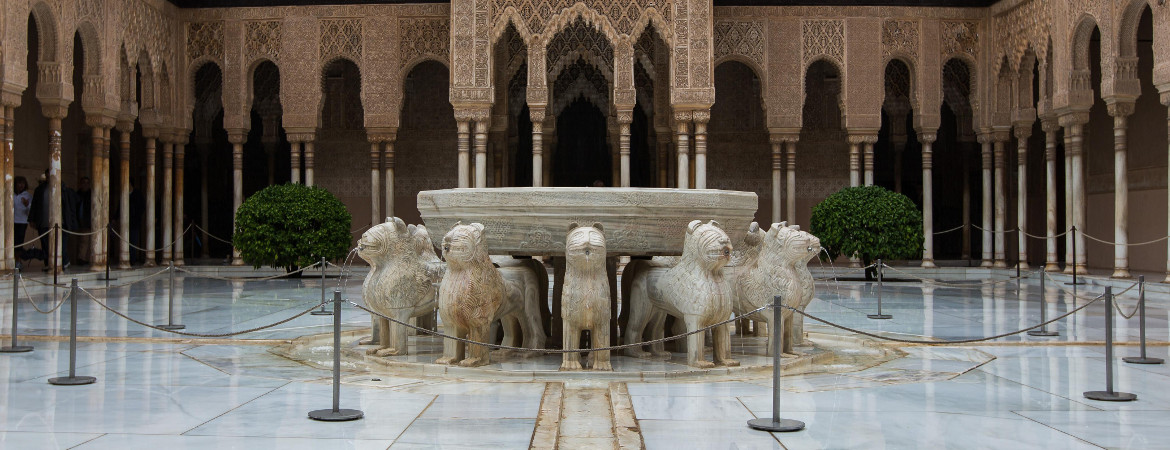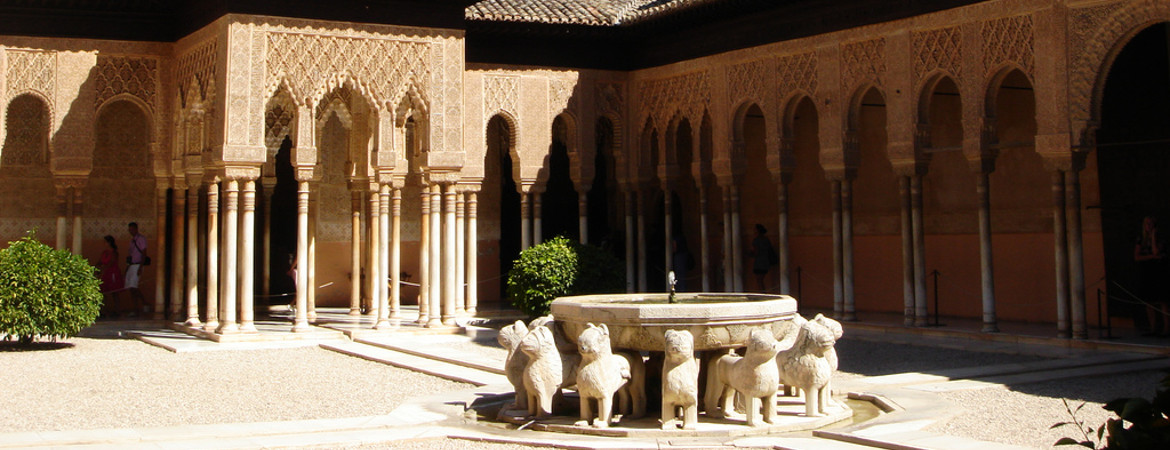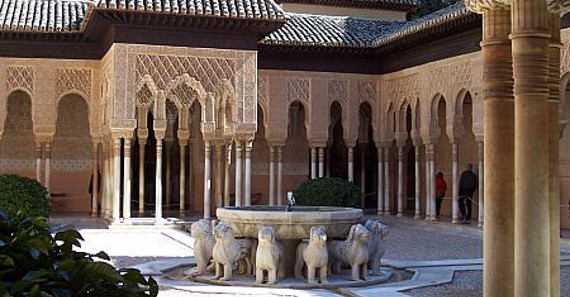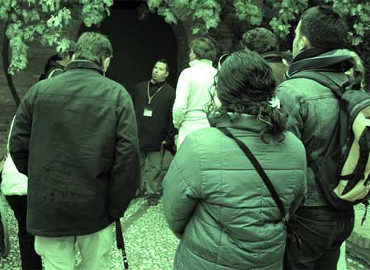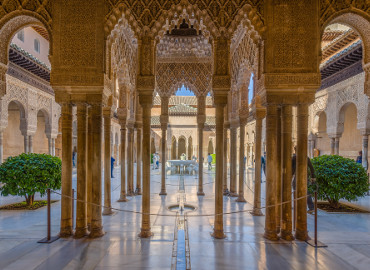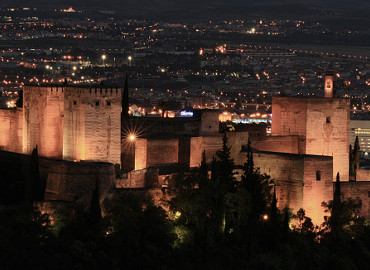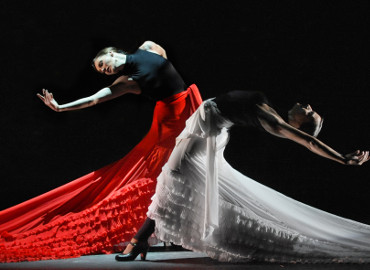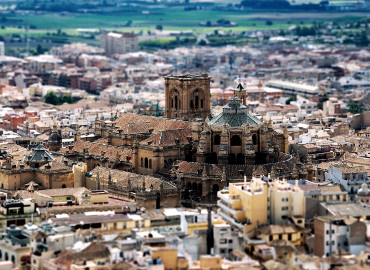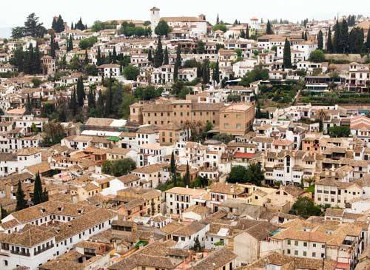The Royal Palace - The Lion’s Palace
At this palace the “nazarie” art and style reaches its maximum splendour, where the beauty has a sensibility and harmony incomparable; where the light, the water, the colours and the exquisite decoration of this palace, are a pleasure for the senses. The previous period of abstract and geometrical decorations are left behind to give way to a more natural style, without a doubt of Christian influence, increased by the friendship between Mohamed V and “Pedro I the Cruel” (who was at that time the Christian monarch). When Mohamed V succeeded his father Yusuf I (1377), he did not limit himself to finishing the reforms started by his father, but he also started the construction of what became his greatest work, the magnificent legacy that he left in the Alhambra: the Lion’s Palace. This palace housed the private rooms of the royal family, and it was built at the angle between the Baths and the “Arrayanes” courtyard.
The Lion’s Fountain
The palace consists of a central courtyard surrounded by galleries with columns, like a Christian cloister, which gives access to different rooms: to the west the “Mocarabes” hall, to the east the “Reyes” hall, to the north the “Dos Hermanas”, the “Ajimeces” and the “Mirador de Daraxa”, and to the south the “Abencerrajes” hall and the “Harem”. There are no windows looking out to the exterior, but there is an interior garden, which corresponds with the Moslem concept of paradise. What today is soil and gravel, in this courtyard, it was gardens then. From every room or hall four streams flowed to the center: the four rivers of paradise. The columns, joined by pierced panels that let the light to come in, have thin cylindrical fusts, rings on the upper part and cubic capitals with carved inscriptions. The grey lead plates work as buffers for earthquakes. The two pavilions at opposite sides of the courtyard are like a remembrance of the “Bedouins” tents. They have a square shape and are decorated with wooden domes supported on pendentives decorated with “muqarbas” (decorative motif based on vertically juxtaposed bows or prisms). The eave was built in the 19th century. The entire gallery is closed with lacework panelled ceilings. The latest research suggest that the Lions come from the house of the Jewish vizier “Yusuf Ibn Nagrela” (1066). It is not known if they were constructed before his death, and at the time, he was accused of wanting to build a much bigger palace than the king’s. An almost exact description of the original fountain is still kept, written by the poet “Ibn Gabirol” (11th-c): they represent the 12 tribes of Israel, two of them have a triangle on the forehead, indicating the two chosen tribes:” Judá” and “Leví”. They are from the 11th century. The basin has verses from the minister and poet “Ibn Zamrak” written on its perimeter, that beautifully describe the fountain: “(...) Diaphane basin, pearl engraved,/ at the border the seed pearl is still,/ and the silver goes amongst daisies,/ fluid and also made white and pure./ So allied is the hard and the flowing / that it is difficult to know which one of them flows (..).” Nowadays, the fountain is being restored and the lions have been placed elsewhere for the time being.
FOR BOOK YOUR TICKET TO THE ALHAMBRA




